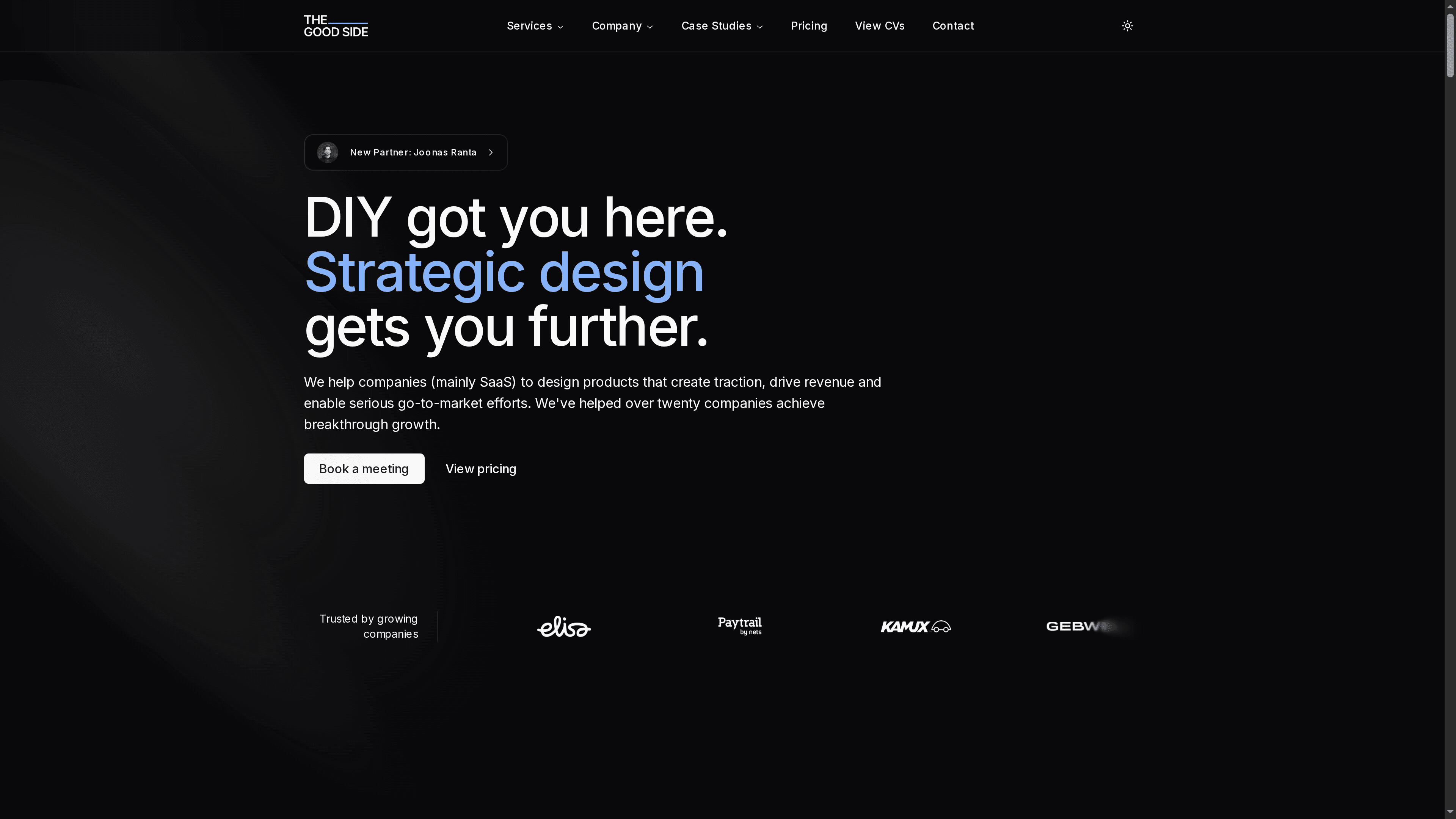Why Invest in UI UX: A Complete Guide
Why invest in UI UX? This comprehensive guide explains UI/UX fundamentals, SaaS business value, measurable ROI, risks of neglect, and strategic advantages.

Did you know that companies lose up to 88 percent of users due to poor digital experiences? The way people interact with software shapes their decisions, satisfaction, and loyalty. With digital products now central to business success, understanding UI and UX is no longer optional. This article offers clear insights on how thoughtful design transforms user journeys and drives measurable business value.
Table of Contents
- Defining UI UX and Its Core Purpose
- Types of UI UX Investments for SaaS
- How UI UX Improves Product Performance
- ROI and Measurable Business Outcomes
- Risks of Poor UI UX and Missed Opportunities
- Choosing the Right UI UX Design Partner
Key Takeaways
| Point | Details |
|---|---|
| Importance of UI/UX | Effective UI/UX design enhances user satisfaction and drives business objectives by addressing user needs through intuitive interactions. |
| Strategic UI/UX Investments | SaaS companies should focus on user research, design systems, and interactive experiences to improve product performance and usability. |
| Measurable ROI | Tracking customer acquisition, retention, and financial performance metrics helps quantify the financial impact of UI/UX investments. |
| Choosing a Design Partner | Selecting a UI/UX design partner with a user-centered approach and technical competencies is vital for achieving successful product outcomes. |
Defining UI UX and Its Core Purpose
User experience (UX) and user interface (UI) are critical design disciplines that transform how people interact with digital products. According to research from Codecademy, UX encompasses all aspects of a user’s interaction with a company’s services and products, while UI design specifically focuses on creating visual and interactive elements that are both functional and pleasurable.
At its core, UX design is about understanding and solving user problems. As Wikipedia research indicates, UX explores how users perceive and experience a product’s utility, ease of use, and overall efficiency. This means going beyond aesthetics to create meaningful, intuitive interactions that make technology feel seamless and natural.
The primary goals of UI/UX design are multifaceted:
- Create intuitive navigation paths
- Reduce user friction
- Enhance user satisfaction
- Improve product usability
- Drive user engagement and retention
When executed effectively, UI/UX design becomes a strategic tool that bridges user needs with business objectives. Learn more about our approach to user experience design to understand how thoughtful design can transform digital products.
Types of UI UX Investments for SaaS
SaaS companies have multiple strategic avenues for UI/UX investments, each designed to enhance product performance and user satisfaction. According to Wikipedia research, user interface design aims to maximize usability by making digital interactions as simple and efficient as possible.
The key types of UI/UX investments for SaaS products include:
- User Research Investments
- Customer journey mapping
- User persona development
- Usability testing
- Behavioral analytics
- Design System Investments
- Consistent design language
- Reusable component libraries
- Brand identity integration
- Scalable visual frameworks
- Interactive Experience Investments
- Intuitive navigation design
- Responsive interface development
- Accessibility improvements
- Performance optimization
Understanding these investment types is crucial for creating digital products that not only look good but deliver meaningful experiences.

Here’s how each type of UI/UX investment benefits SaaS products:
| Investment Type | Key Activities | Main Benefits |
|---|---|---|
| User Research | Journey mapping User personas Usability testing |
Deeper user insight Better problem solving |
| Design Systems | Design language Component libraries Brand integration |
Consistent look Faster iteration |
| Interactive Experiences | Navigation design Responsive dev Accessibility |
Smoother usage Wider audience reach |
How UI UX Improves Product Performance
Product performance in SaaS is directly tied to how users experience and interact with digital interfaces. According to Wikipedia research on user experience evaluation, understanding how people perceive a system before, during, and after interaction is crucial for continuous improvement.
User research plays a pivotal role in enhancing product performance. By systematically studying user behaviors, needs, and motivations, companies can identify and eliminate friction points that slow down user adoption and engagement. This approach goes beyond aesthetic improvements, focusing on creating intuitive, efficient experiences that solve real user problems.
Key performance improvements through UI/UX include:
- Faster User Onboarding
- Reduced learning curve
- Intuitive interface navigation
- Clear user guidance
- Simplified complex processes
- Increased User Retention
- Smooth user journeys
- Predictable interaction patterns
- Reduced cognitive load
- Personalized experience design
- Enhanced Conversion Rates
- Streamlined user flows
- Minimized decision fatigue
- Strategic call-to-action placement
- Improved trust through design consistency
Learn more about our step-by-step UI/UX process for product success to understand how strategic design transforms SaaS product performance.
ROI and Measurable Business Outcomes
Investing in UI/UX is not just a design choice—it’s a strategic financial decision with tangible business impacts. According to Wikipedia research on user experience design, a user-centered approach can significantly improve usability, brand perception, and overall product performance.
Businesses can measure UI/UX investments through several key performance indicators that directly translate design improvements into financial outcomes. Negative user experiences can dramatically reduce product adoption, making strategic design investments critical for sustainable growth.
Measurable ROI metrics for UI/UX investments include:
- Customer Acquisition Metrics
- Reduced customer acquisition cost
- Higher conversion rates
- Improved landing page performance
- Increased lead generation
- Retention and Engagement Metrics
- Lower churn rates
- Extended user session duration
- Increased user lifetime value
- Higher feature adoption rates
- Financial Performance Indicators
- Decreased support ticket volumes
- Reduced onboarding time and costs
- Improved customer satisfaction scores
- Higher recurring revenue potential
By systematically tracking these metrics, companies can quantify the direct financial impact of their UI/UX investments and make data-driven design decisions.
Explore our case studies to see real results from strategic design partnerships.
Risks of Poor UI UX and Missed Opportunities
Poor UI/UX design can be catastrophic for digital products, transforming potential success into complete failure. According to Wikipedia research on user experience, negative interactions can dramatically diminish product usage and prevent companies from achieving their desired positive impacts.
The consequences of neglecting user experience extend far beyond aesthetic concerns. When interfaces are confusing, unintuitive, or frustrating, businesses risk losing customers, damaging brand reputation, and creating significant barriers to product adoption. These design failures create invisible friction that slowly erodes user trust and enthusiasm.
Key risks of poor UI/UX include:
- User Abandonment Risks
- High bounce rates
- Immediate product dismissal
- Negative word-of-mouth
- Reduced user confidence
- Financial Performance Risks
- Decreased conversion rates
- Higher customer acquisition costs
- Reduced customer lifetime value
- Increased support and training expenses
- Competitive Disadvantage Risks
- Loss of market positioning
- Slower user onboarding
- Reduced product differentiation
- Difficulty attracting new users
Learn how design debt can rapidly undermine product success and understand the critical importance of proactive, strategic design investment.
Choosing the Right UI UX Design Partner
Selecting a UI/UX design partner is a critical strategic decision that can make or break your product’s success. According to Wikipedia research on user experience design, the right partner should embrace a user-centered approach that prioritizes research, data analysis, and comprehensive testing.
Effective UI/UX design partnerships go beyond aesthetic improvements. They require deep understanding of user behaviors, motivations, and complex interaction patterns. A strategic design partner should demonstrate expertise in translating user research into meaningful product experiences that solve real business challenges.
Key criteria for choosing the right UI/UX design partner include:
- Strategic Capabilities
- SaaS domain expertise
- Proven track record of measurable outcomes
- Flexible engagement models
- Comprehensive design thinking approach
- Technical Competencies
- Advanced user research methodologies
- Cross-functional design skills
- Data-driven design processes
- Modern design tool proficiency
- Partnership Qualities
- Transparent communication
- Rapid talent matching
- Cultural alignment
- Collaborative work style
Discover our specialized UI/UX design services for SaaS companies and see how strategic design partnerships can transform your product experience.
Unlock the Full Potential of Your SaaS Product with Strategic UI/UX Investment
Investing in UI/UX design is essential to overcome challenges like confusing interfaces, disconnected user journeys, and missed growth opportunities. As the article highlights, improving user onboarding, retention, and conversion rates depends on solving real user problems through thoughtful design. The Good Side Oy specializes in these exact pain points, delivering senior SaaS-focused designers who transform fragmented experiences into cohesive, high-performing products aligned with your business goals.

Ready to turn design challenges into measurable growth? Start with a free design audit and experience how our flexible, fast integration can accelerate activation and revenue. Discover how our UI/UX design services, backed by a network of over 100 expert designers, can redefine your digital product journey. Learn more about our approach and take the first step to lasting product success at The Good Side.
Frequently Asked Questions
What is the difference between UI and UX design?
UI (User Interface) design focuses on creating the visual and interactive elements of a product, while UX (User Experience) design encompasses the overall experience a user has when interacting with a product, including usability and satisfaction.
How do UI/UX investments benefit SaaS companies?
Investing in UI/UX for SaaS can enhance user satisfaction, reduce friction, improve product usability, and drive user engagement, ultimately leading to better business performance and customer retention.
What key activities should be included in user research for UI/UX design?
Key activities in user research include customer journey mapping, developing user personas, usability testing, and analyzing behavioral analytics to better understand user needs and improve the product design.
How can poor UI/UX design impact a business?
Poor UI/UX design can lead to user abandonment, decreased conversion rates, higher customer acquisition costs, and a damaged brand reputation, ultimately hindering business growth and success.
Recommended
- The Essential Guide to UI in SaaS Conversion
- The Essential Guide to UI in SaaS Conversion | The Good Side Blog
- UI/UX Design Services - Create Experiences Users Love | The Good Side
- Step by Step UI/UX Process for SaaS Product Success | The Good Side Blog
- Effective Website Design: Key Principles and Proven Strategies 2025
- Modern Website Design Explained: Key Elements & Trends – Lind Creative